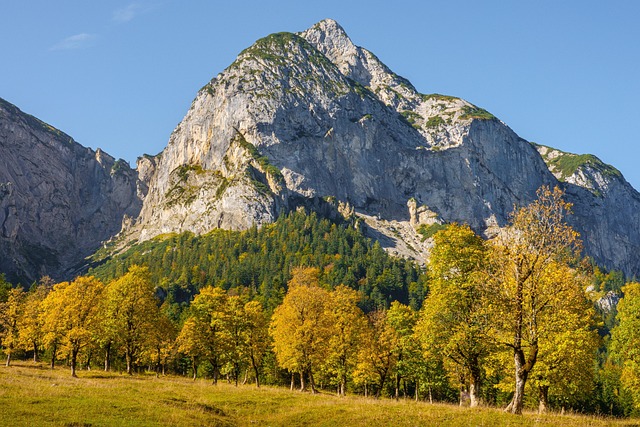In densely populated areas like Plano, Texas, where real estate values are high, professional tree removal services (Tree Removal Plano TX) are crucial for public safety and urban integrity. These services handle structural concerns, disease, pest infestations, and landscape alterations, using specialized tools to protect structures, roads, and utilities while minimizing ecological impact. Understanding signs of decline in trees is vital, as dead or dying trees should be removed to prevent hazards. Professional arborists navigate city environments, adhere to local regulations, and offer compliant services, prioritizing safety and biodiversity. Choosing a reputable Tree Removal Plano TX company with experience, licensing, insurance, transparent pricing, and aftercare services ensures optimal results while preserving the region's ecological balance. Proper post-removal care includes debris cleanup, planting new suitable trees or shrubs, and regular maintenance to enhance the landscape.
In the vibrant city of Plano, Texas, large tree removal is a topic that demands careful consideration. Understanding when and why a tree needs to be removed is crucial for maintaining safe and healthy urban environments. This comprehensive guide explores the process, from identifying issues to choosing expert services in Plano. We delve into safety measures, environmental impacts, and post-removal care tips, ensuring residents make informed decisions regarding tree removal. Discover the best practices for managing large trees in your Plano backyard with our expert insights.
- Understanding the Need for Large Tree Removal in Plano, TX
- Identifying When a Tree Needs to Be Removed
- Safety Considerations for Tree Removal in Urban Environments
- Choosing the Right Tree Removal Service in Plano, TX
- The Environmental Impact of Large Tree Removal
- Post-Removal Care and Landscaping Tips for Plano Residents
Understanding the Need for Large Tree Removal in Plano, TX

In densely populated areas like Plano, Texas, where real estate values and urban development are high, large tree removal becomes a necessary service. While many residents appreciate the beauty and environmental benefits of trees, certain circumstances require their safe and efficient removal. These situations might include structural concerns where mature trees pose risks to nearby buildings or infrastructure, disease and pest infestations that could spread to other trees, or landscape alterations for construction projects.
Tree Removal Plano TX services are crucial in ensuring public safety and maintaining the integrity of urban spaces. Professionals equipped with specialized tools and knowledge handle these removals, considering not just the tree but also its surrounding environment. Proper removal techniques protect nearby structures, roads, and utilities while minimizing ecological impact, fostering a harmonious balance between urban development and natural elements.
Identifying When a Tree Needs to Be Removed

When considering tree removal in Plano, Texas, knowing when a tree has reached its end is crucial. While many trees can live for decades or even centuries, there are signs that indicate a tree may need to be removed. One of the most obvious reasons is if the tree is dead or dying. Fallen or loose branches, abnormal growths, and a general lack of vibrancy in leaves or needles are all indicators that a tree’s health is declining.
Additionally, trees that have sustained significant damage from storms, lightning, or pest infestations may require removal. If a tree has developed structural weaknesses, such as split trunks, roots exposed due to erosion, or branches hanging precariously, it poses a potential safety hazard and should be evaluated by professionals. Regular maintenance and inspections can help identify these issues early on, ensuring the safety of your property and those around it in Plano, TX.
Safety Considerations for Tree Removal in Urban Environments

When it comes to tree removal in urban areas like Plano, Texas, safety should always be the top priority. In densely populated cities, careful navigation is crucial to avoid damaging nearby structures or injuring bystanders. Professionals involved in Tree Removal Plano TX must adhere to strict safety protocols, including proper training and equipment use. This includes assessing the potential risks associated with each tree, such as dead branches or proximity to power lines, before any removal work begins.
Additionally, urban tree removal requires a nuanced understanding of local regulations. Many cities have ordinances protecting certain species or requiring permits for large-scale removals to preserve biodiversity and aesthetic value. Tree removal companies operating in Plano TX must stay informed about these rules to ensure compliance, thereby maintaining the safety and beauty of the community.
Choosing the Right Tree Removal Service in Plano, TX

When considering tree removal in Plano, Texas, choosing the right service is paramount to ensure safety and optimal results. With numerous options available, it’s crucial to assess each company’s expertise, equipment, and customer reviews to make an informed decision. Look for professionals who specialize in Tree Removal Plano TX, have extensive experience handling various tree species and sizes, and employ licensed, insured workers. Proper licensing and insurance safeguard both your property and the service providers during the removal process.
Additionally, inquire about their method and safety protocols. Reputable services will offer free estimates, transparent pricing, and flexible scheduling. They should also be equipped to handle emergency situations and provide after-care services like debris removal. Verifying their reputation through online reviews and local references can help ensure you’re hiring a reliable and trustworthy tree removal company for your Plano property.
The Environmental Impact of Large Tree Removal

The removal of large trees in Plano, Texas, can have significant environmental implications. These majestic trees play a vital role in maintaining ecological balance and contribute to the overall health of the region’s ecosystem. They provide habitats for local wildlife, help regulate temperature by offering shade, and play a crucial part in preventing soil erosion. When these trees are removed, especially in urban areas, it can disrupt the delicate natural balance.
In Tree Removal Plano TX, it’s essential to consider the potential loss of biodiversity. Birds, insects, and other creatures rely on these trees for food and shelter, so their removal could displace or diminish local wildlife populations. Additionally, large trees often act as carbon sinks, absorbing and storing significant amounts of carbon dioxide. Removing them could contribute to greenhouse gas emissions, counteracting efforts to mitigate climate change.
Post-Removal Care and Landscaping Tips for Plano Residents

After a large tree has been removed, proper care and landscaping practices are essential for Plano residents to ensure a safe and aesthetically pleasing environment. The first step is to clean up any debris left behind, including branches and trunk remnants. It’s recommended to dispose of these materials responsibly, either through recycling or proper waste management services in Plano TX.
Next, consider enhancing the landscape by planting new trees or shrubs suitable for your yard. This not only restores the natural beauty but also provides environmental benefits such as shade, improved air quality, and habitat for local wildlife. Additionally, regular maintenance like weeding and mulching can help the newly landscaped area thrive, creating a welcoming and well-cared-for outdoor space in your Plano home.
When considering large tree removal in Plano, Texas, it’s essential to balance safety, environmental impact, and professional service. By understanding when a tree needs removal and choosing a reputable company like those specializing in Tree Removal Plano TX, residents can ensure the process is handled efficiently and responsibly. Post-removal care and landscaping opportunities allow for new growth and enhanced outdoor spaces. Prioritizing these aspects contributes to a vibrant and sustainable urban environment.






